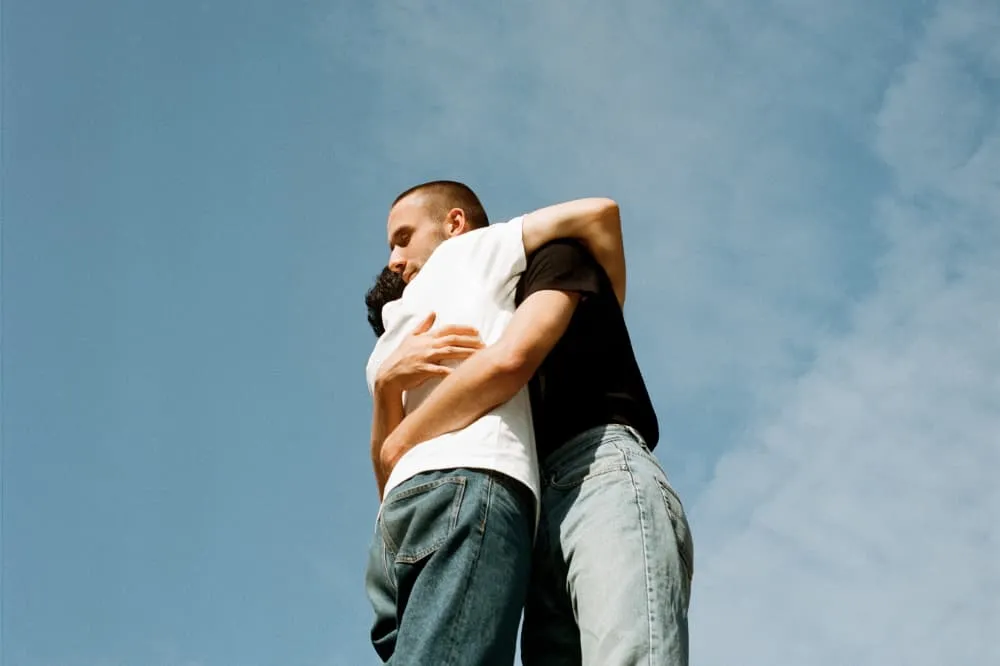Different types of homophobia and transphobia
Before exploring the effects of social discrimination on mental health, it’s helpful to explore what precisely social discrimination is concerning the LGBTQIA+ community.
Transphobia and homophobia can manifest in many different ways, including on structural, systemic, and interpersonal levels.
Structural discrimination is imposed through laws, cultural norms, and policies restricting access to various resources.
Examples of structural stigma and discrimination faced by the LGBTQIA+ community include:
- Refusing housing to queer or transgender individuals
- Not hiring someone due to their gender or sexual orientation
- Refusing to provide gender-affirming care
- The “Walking While Trans” law, which disproportionately targets trans women of color14
- Inadequate or non-existent insurance coverage for gender-affirming care and family planning services for queer and trans folks
- Bills requiring trans and nonbinary youth athletes to play with their assigned sex at birth
- Lack of access to public bathrooms
Structural discrimination can result in a lack of access to essential resources and can have detrimental effects on the lives of LGBTQIA+ people. These can include homelessness or lack of stable housing, untreated medical conditions, legal complications, financial difficulties, and mental health risks.
In addition to structural discrimination, LGTBQ individuals also often face transphobia and homophobia on an interpersonal level. This type of discrimination is connected to societal beliefs, norms, and biases.
Interpersonal discrimination may include:
- Verbal harassment
- Sexual assault due to gender or sexual orientation
- Physical violence
- Bullying
- Microaggressions, such as using the incorrect name or pronouns
- Social exclusion at school or work
- Familial rejection
- Mistreatment in the healthcare setting
- Stereotyping
These are just a few examples of the many types of social discrimination transgender and queer people experience. Again, these types of experiences can contribute to the increased risk of developing psychiatric conditions.
The harmful effects of homophobia and transphobia
Many LGTBQ individuals experience harassment, familial rejection, discrimination, excommunication from religious groups, and denial of basic human and civil rights, all of which can contribute to mental health conditions.
A common framework for understanding the effects of transphobia and homophobia on psychological and physical health is the minority stress model. This schema explains how discrimination, stigma, and prejudice can create a stressful and hostile environment, which may contribute to the development of psychiatric issues.2
Researchers have established three underlying principles of minority stress:2
- It is unique to marginalized individuals but adds to general everyday stressors.
- It is chronic or ongoing and related to underlying cultural and social influences, beliefs, or practices.
- It is socially based, meaning it is caused by structures and social processes rather than individual experiences.
Minority stress can also lead to internalized transphobia and homophobia. This occurs when people view themselves in a negative light due to the influence of cultural stigmas about their sexual orientation or gender.
Internalized stigma can put a strain on someone’s mental health, even in the absence of negative external events. Strong cultural, familial, or social influences on people, plus their exposure to society’s anti-LGBTQIA+ attitudes, can lead to conflicting ideas or feelings about their identity and internal strife.2
Increased risk for mental health conditions
Members of the LGBTQIA+ community experience higher rates of many mental health conditions, such as:
3- Anxiety
- Depression
- Obsessive-compulsive disorder (OCD)
- Phobic disorders
- Post-traumatic stress disorder (PTSD)
- Eating disorders
The rate of PTSD in LGBTQIA+ individuals is double that of their cisgender heterosexual counterparts.4 Social discrimination, bullying, harassment, abuse, and more can all contribute to an increased risk of PTSD among queer and trans individuals.
1 Suicidality
Unfortunately, LGBTQIA+ people face higher rates of suicidal thoughts and attempts than cisgender and heterosexual individuals.
Particularly alarming is the prevalence of suicidality in the trans community, with approximately 40% of trans adults having attempted suicide, compared to under 5% of the general population.1
Substance use disorders
Queer people are about twice as likely as their heterosexual counterparts to struggle with a substance use disorder or substance addiction. Moreover, trans people are nearly four times as likely as their cisgender peers to have a drug or alcohol addiction.
1A 2018 National Survey on Drug Use and Health (NSDUH) found the following:
4,11- About 9% of queer adults used opioids in the past year, compared to 3.8% of adults in the general population.
- An estimated 9% of queer adults misused prescription opioids in the past year, a figure which rose from 6.4% in 2017.
- Nearly 3.9% of queer respondents experienced marijuana use disorder in the last year, compared to 1.3% of the general population.
- About 12.4% of queer adults between ages 18 and 25 reported an alcohol addiction, compared to 10.1% of the overall population.
A separate national study found that trans people were 3.6 times more likely than the cis people in their sample to experience a substance use disorder. Moreover, trans people were over five times more likely to have a marijuana addiction than cis people, four times more likely to have a cocaine addiction, and three times more likely to be addicted to opioids.
5 Eating disorders
Queer and trans people experience eating disorders and
disordered eating behaviors at a higher rate than their cisgender and heterosexual peers.
Research has found that 54% of LGBTQIA+ adolescents have been diagnosed with an eating disorder, with an additional 21% suspecting they may have an eating disorder.
6 Another study found that nearly 61% of queer and trans adolescents reported engaging in at least one disordered eating behavior in the past year.
6Research has also found that queer and transgender people who perceive higher levels of stigma are more likely to experience
symptoms of an eating disorder. Additionally, hiding one’s sexual identity, discrimination, and shame has been linked to an increased likelihood of developing an eating disorder.
6 Much like other mental health conditions, eating disorders are not caused by one factor. They are complex and dynamic ailments, and each case is different. However, this research strongly suggests that social discrimination can play an influential role in their development.
Intersectionality and mental health
Intersectionality is a framework that describes the interconnected nature of the various aspects of a person’s identity. This schema also explores how these intersecting aspects can be associated with disadvantage and discrimination.7
For example, queer and trans individuals may also experience racism, sexism, ableism, or religious discrimination based on other aspects of their identity. This generally contributes to the experience of additional marginalization, discrimination, and prejudice.
People sitting at the intersection of more than one marginalized identity often face an increased likelihood of multiple hardships. Trans women of color, for example, often experience profound marginalization, oppression, and devastatingly high rates of sexual and physical violence.12,13
LGBTQIA+ youth, discrimination, and mental health
Although more U.S. adolescents are identifying as LGBTQIA+ than ever before, transgender and queer teens still experience a significant amount of social discrimination.
A 2019 survey revealed as much as 86% of LGBTQIA+ youth had been assaulted or harassed at school—experiences that can lead to mental health complications.1
Many LGBTQIA+ youth report hearing anti-LGBTQIA+ language, being bullied, and experiencing subtler forms of discrimination while at school, such as a non-inclusive curriculum.
Further, some LGBTQIA+ students report that administrators, teachers, and other adult leaders at school do not intervene when they witness harassment or are told about it directly.8
Students who are targeted because of their gender or sexual orientation tend to have lower grade point averages, are more likely to miss school, and are more likely to opt out of post-secondary education.8
However, intentional and inclusive changes can help make school a safer, more welcoming place for queer and transgender students.
Much like queer and trans adults, young people who identify as LGBTQIA+ are six times more likely to experience severe depression and three times more likely to use illicit substances.9
The high rates of social discrimination may also impact suicide rates in this population, with one study finding high school students identifying as queer more than four times as likely to have attempted suicide than heterosexual students.1
Another study found that LGBTQIA+ youth are 14 times more likely to attempt suicide than their cisgender and heterosexual counterparts.3 Trans and nonbinary students are of particular concern, with about 50% reporting they had seriously considered suicide in the previous year.8
Protective factors for mental health in the LGBTQIA+ community
Social discrimination can have devastating and detrimental effects on mental health. The good news is there are some protective factors against the consequences of transphobia and homophobia, such as:3,10
- Family and community support
- Access to affirming and inclusive medical and mental health care
- Anti-discrimination policies
- Inclusive and supportive work environments
- Addressing the social and environmental factors that influence health
- Experiencing positive reactions to coming out
- Community building with other LGBTQIA+ people, which can reduce internalized homophobia and transphobia
A strong support system is crucial for enduring nearly any negative experience in life, including the type of mental and physical stressors brought on by transphobia and homophobia.
On a broader scale, the systemic change needed to create a more welcoming society takes time. But working together in an empowered, supportive community to educate and empower others can help bring it about for the betterment of everyone.









